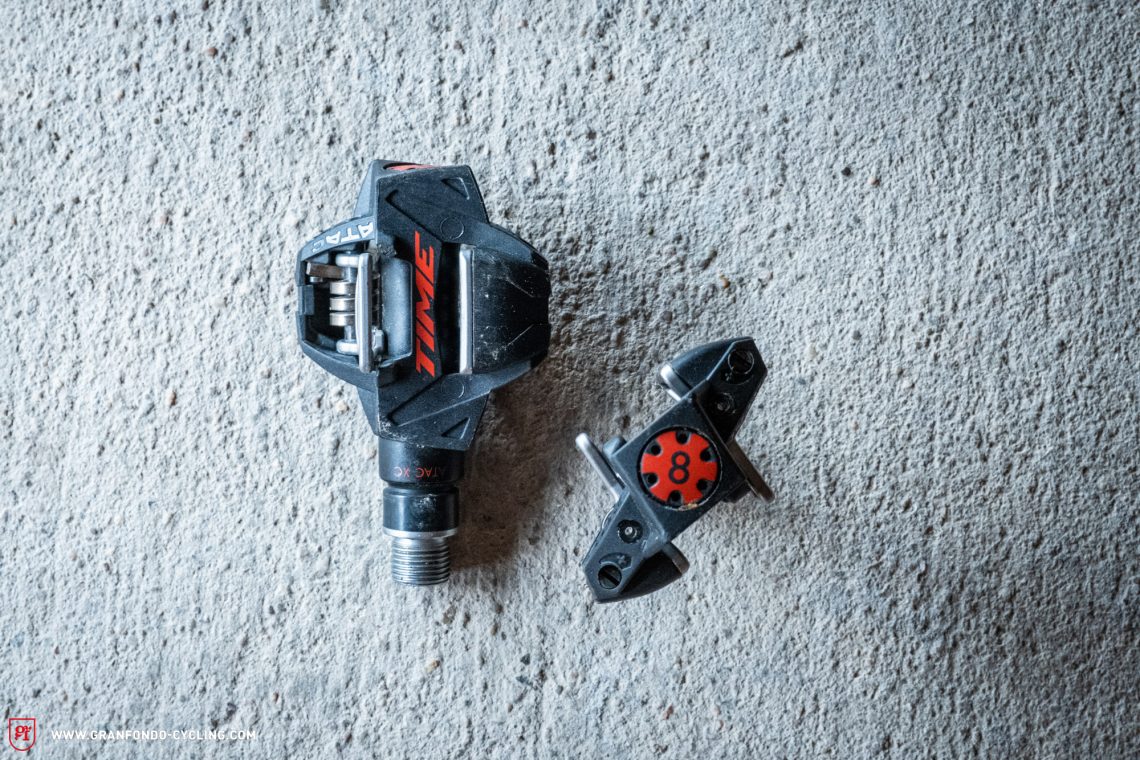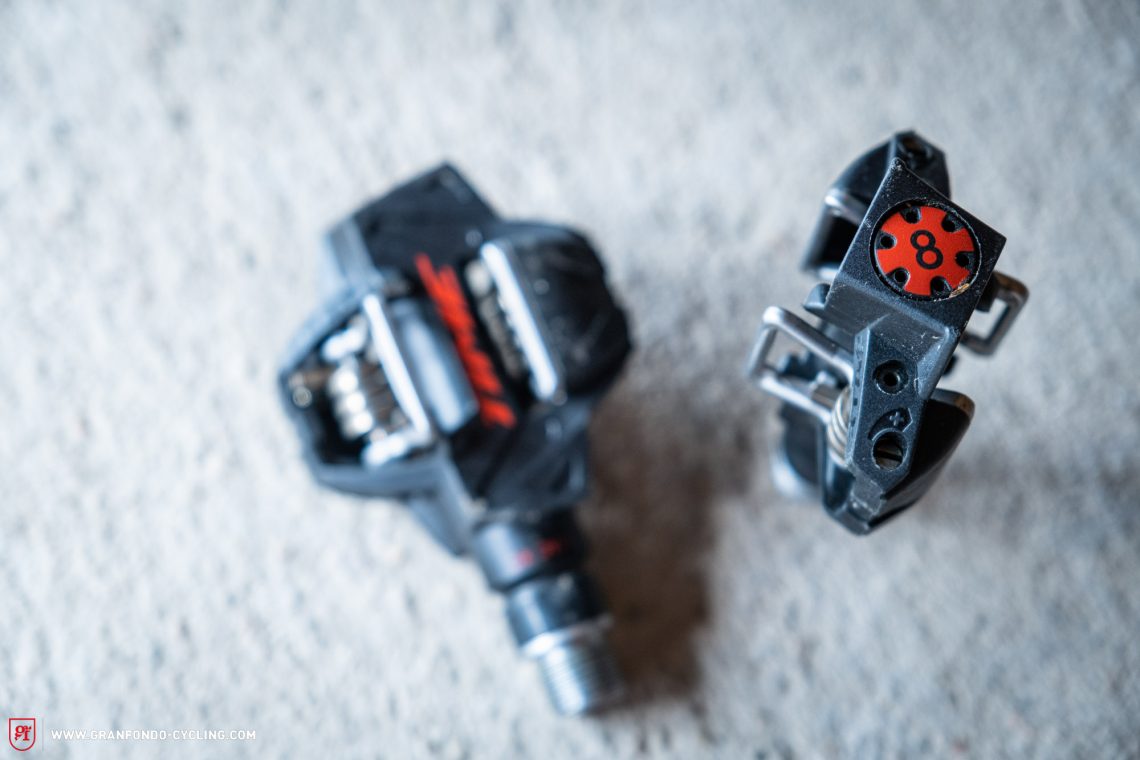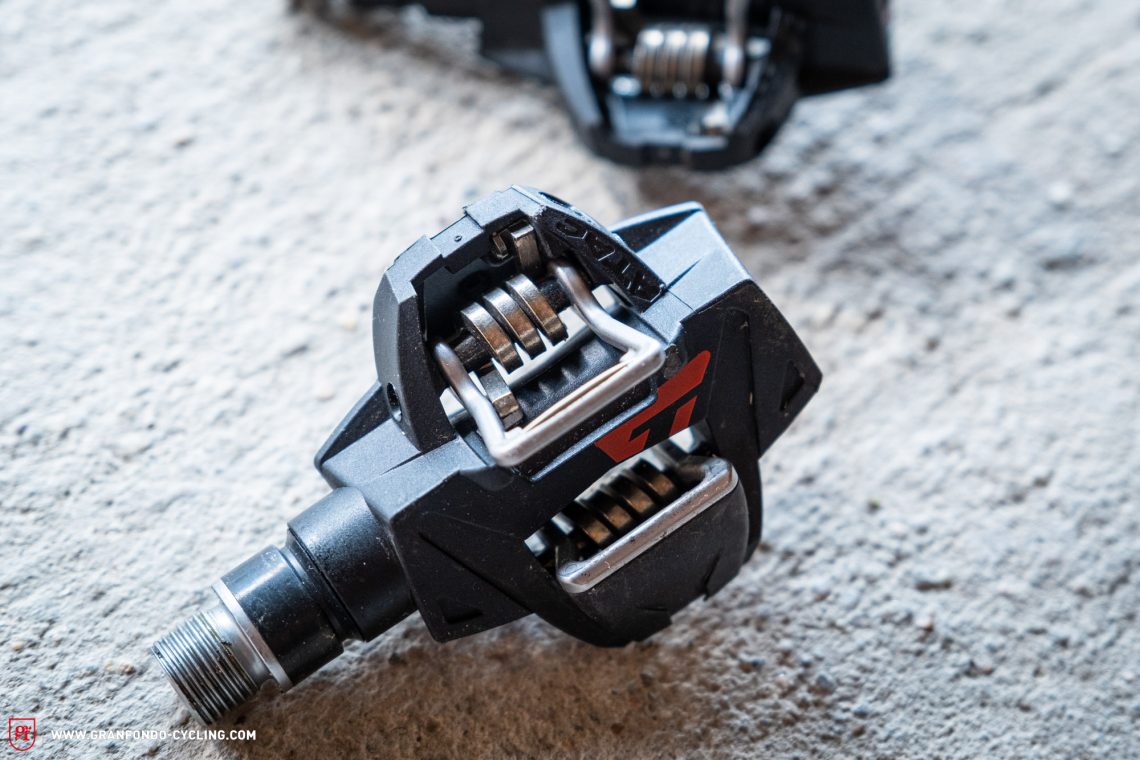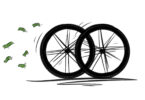The TIME ATAC XC 8 pedals have a lot going for them on paper: they’re the lightest pedals on test, they’re well-priced, come with different cleats to change the release angle and they offer a lot of float. But how do they perform in practice? Have they got what it takes to prevail against the competition?

TIME are based in the south of France and are best known for their carbon road bike frames. They’re one of few manufacturers that build their own frames within the EU, using their own carbon fibres that they weave on special machines. Can the French brand transfer this carbon know-how into their pedals? We put them to the test to find out.
Simple but functional: TIME ATAC XC 8
The TIME ATAC XC 8 are the lightest pedals in the test field, weighing in at just 291 g, despite the fact that they’re priced quite reasonably at € 169. There is a wide variety of models in the ATAC range with prices ranging from € 42 to € 264. Their design is very simple, though they make a high-quality impression and offer good workmanship. A long-term review will prove how well they ultimately perform.

TIME rely on a specially developed clipless mechanism, which is constructed almost like an inverted SPD system. As such, the rear end of the mechanism is rigid, and the front bit is spring-loaded. This makes clicking in easier, as you can push your feet down or forwards to do so. Using their own system gives them more freedom in developing their own solution, but it makes the procurement of spare parts more difficult. The spring preload tension is adjustable, but you only get three clicks of adjustment, which make little difference in practice. The pedals provide a lot of freedom of movement with 5° of float and they feel similar to the Hope pedals. However, the feeling of clicking in is a little less defined with the TIME models, and, as just mentioned, it’s hardly adjustable. By rotating the cleats, you can adjust the release angle between 13° and 17°. In addition, they have an easy-out cleat with a small release angle of 10°. This makes the ATAC XC 8 pedals another great option for beginners. However, the cleats cannot be moved to the right and left, so you can’t adjust the width of your stance. The Q-factor is also fixed at 54 mm.

The stack height of the TIME ATAC XC 8 is the tallest in the test field at 19 mm. This reduces their pedalling efficiency and significantly increases the risk of striking them on the ground, especially when you’re pedalling through a corner or rough terrain. That said, their self-cleaning properties are good since the spring-loaded mechanism at the front lets you push dirt out when clicking in instead of just making it pack up. As a result, they’re very well suited for tours in adverse conditions.
| Brand | Model | Weight | Price | System | Float | Release angle | Q-factor | Stack height |
|---|---|---|---|---|---|---|---|---|
| TIME | ATAC XC 8 | 291 g | € 169.00 | TIME | 5° | 10°/13°/17° | 54 mm | 19 mm |
Our conclusion on the TIME ATAC XC 8
The TIME ATAC XC 8 pedals look quite simple at first glance, but they’re very well thought out. The in-house clipless system is easy to click in and out of and it also offers good self-cleaning properties. Although they’re very light, the adjustability is limited, and they have a very tall stack height. Thanks to the choice of cleats offering different release angles, however, they’re equally well-suited for beginners and experienced riders, ultimately offering good all-round capabilities.
Tops
- clicking in and out is easy
- good self-cleaning
- beginner-friendly thanks to cleats with a small release angle
- good all-rounders
Flops
- spring preload tension hardly adjustable
- tall stack height
Did you enjoy this article? If so, we would be stoked if you decide to support us with a monthly contribution. By becoming a supporter of GRAN FONDO, you will help secure a sustainable future for high-quality cycling journalism. Click here to learn more.
Words: Simon Kohler Photos: Simon Hänle







